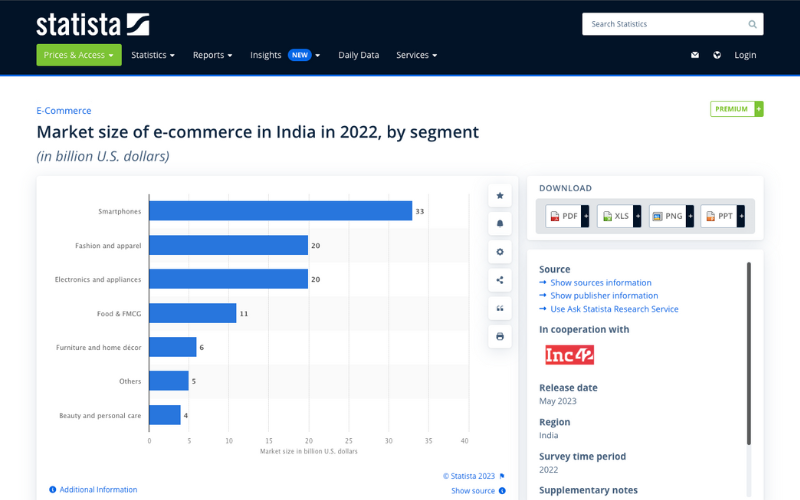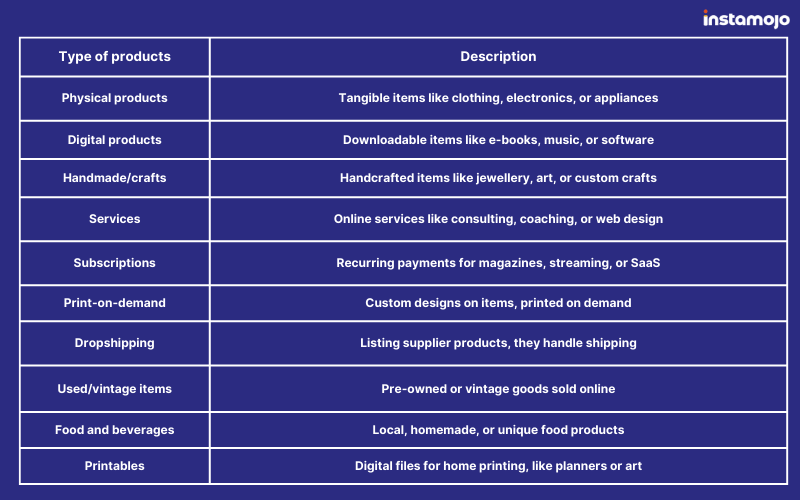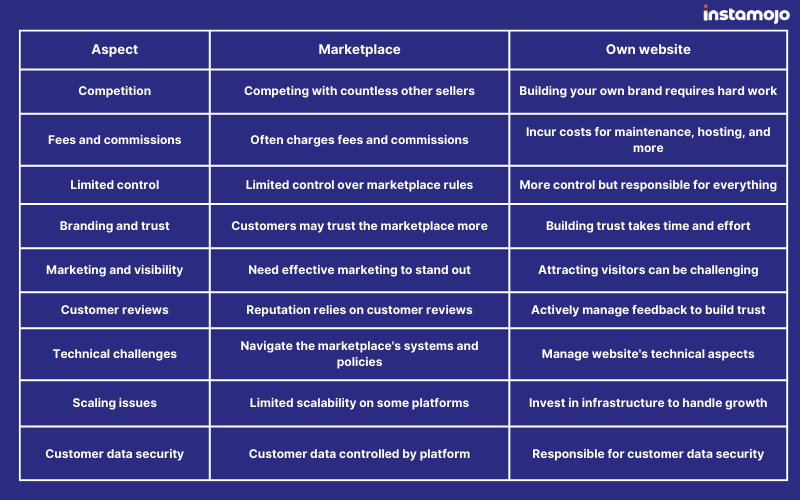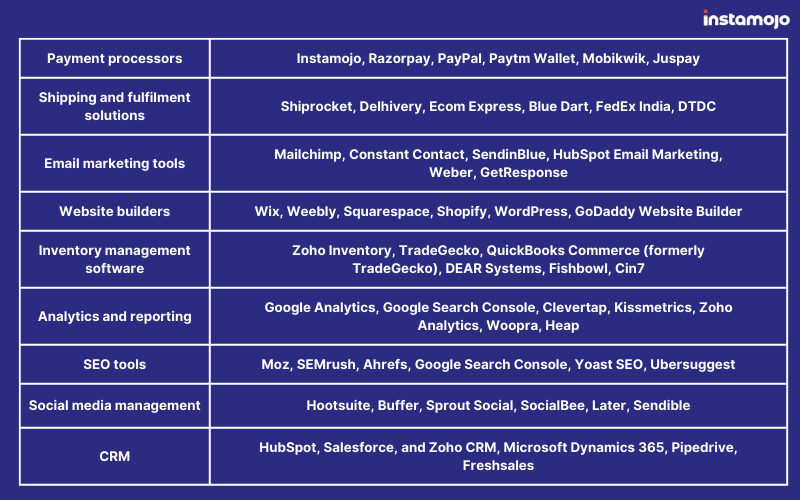Quick Summary:
Are you ready to start your journey to sell online? If yes, then this comprehensive guide is your go-to resource for both beginners and experts in the world of eCommerce. Hence, from choosing the right platform to crafting irresistible product listings, mastering digital marketing, and optimising customer satisfaction, we’ve got you covered. Whether you’re selling handmade crafts, art, jewellery or digital services, this is the perfect guide that will equip you with the knowledge of tools for succeeding and thriving.
Why does selling online matter?
India’s unique economic and cultural landscape is perfect for nurturing eCommerce.
Here is a study by Statista on eCommerce that shows just how powerful selling online can be in India:
- Predicted 427 million online shoppers by 2027.
- The eCommerce industry is estimated to surpass 350 billion U.S. dollars by 2030.

This fact explains why so many online stores are popping up these days. Data consistently shows how the new generation prefers the digital way of life. Online shopping is a brand-new future for GenZs!
Related read: Future Proofing Your eCommerce Business: Is D2C the Way to go in
1. Convenience and accessibility
Online selling offers convenience for you and your customers. Your store is open 24/7, allowing customers to shop at their convenience without worrying about closing times or location constraints.
Convenience is a game-changer in meeting rising customer expectations, with online selling offering easy ordering, fast shipping, and hassle-free returns.
2. Data-driven decision-making
Selling online also lets you collect valuable data on customer preferences and habits at your fingertips.
This further gives you an edge when optimising offerings and marketing.
3. Scalability and growth
Online selling lets you scale seamlessly with your growing business, free from physical and cost constraints.
Online selling enables effortless market expansion and product line additions, fuelling business growth dynamically.
Related read: Top advantages and disadvantages of eCommerce in India
Explore our premium store plans
Trends and future of D2C eCommerce
With mega players like Tata and Reliance choosing D2C eCommerce channels of distribution – one thing is clear. The future of online selling is D2C.
Here are some trends dominating the D2C eCommerce field:
1. Personal touch and customer love
It fosters customer loyalty, sets brands apart, and drives repeat business.
Based on Invesp’s research findings: When targeting repeat customers, this success rate significantly increases to an impressive range of 60% to 70%.
D2C brands excel at crafting seamless and enjoyable shopping experiences that are tailored to the specific needs of their audience.
2. Eco-friendly and ethical choices
It aligns with the growing consumer demand for sustainable and socially responsible practices.
In a survey conducted by McKinsey & Co., 66% of all respondents prioritize sustainability in their purchase decisions and 75% of millennial respondents specifically consider sustainability when making purchases.
Today’s consumers tend to align themselves with brands that share their values and priorities, particularly in relation to sustainability.
3. Shop on the go – mobile rules
When was the last time you saw someone without a phone in their hand? Your eCommerce strategy needs to have a mobile phone at its centre. Which means:
- Mobile friendly websites
- Responsive designs
- Dedicated shopping app
As a D2C eCommerce brand selling online, nailing this would mean enhanced user experiences, reduced bounce rates, and the ability to capture the attention of the on-the-go consumer base.
4. Social media gets shopping-friendly
It reflects the transformation of social media platforms into robust shopping channels.
- Scroll, click, and shop: D2C brands are making it easy to shop right from your favourite social media platform. You can now buy products directly through shoppable posts and stories.
- Influence matters: Influencers are here to stay. Brands are joining forces with social media stars to reach wider audiences and build trust through genuine endorsements.
Related read: Creating an influencer marketing campaign: 6 steps to success
5. Subscriptions and loyalty
They signify a shift in consumer preferences towards ongoing relationships with brands.
- Subscription surge: D2C brands are turning subscription services into goldmines. They’re keeping customers loyal with monthly surprises and exclusive perks.
- Loyalty, levelled up: Loyalty programs are not just about points any more. They’re multi-tiered with juicy rewards that make you feel like a VIP shopper.
Who can benefit from selling online?
D2C eCommerce is a trend that will only see upward growth. So who will actually benefit from selling online from their own eCommerce websites?
1. Small businesses and startups
Imagine you’ve got a brilliant business idea, but you don’t have a huge budget for a fancy physical storefront. No worries! Selling online is perfect for small businesses and startups.
- Low overheads: You can get started with a minimal budget, thanks to the lower costs of running an online store compared to a physical one.
- Global reach: Your little corner shop can now attract customers from all around the world. The internet knows no boundaries.
- Niche market love: Got a super specific product or service? Online selling lets you reach your perfect niche audience.
Related read: Top 15 high-profit margin products to sell online in India (2023)
2. Artists and creatives
Calling all artists, writers, musicians, and creatives of all stripes! The internet is your canvas, and it’s time to make your mark.
- Worldwide exposure: The web gives you a global stage to showcase your work and connect with art enthusiasts from everywhere.
- Direct connection: No middlemen here! You can build direct relationships with your fans and customers.
- eCommerce platforms: Platforms like Instamojo let you start at no cost, and give you all the tools you need to manage your business from one dashboard, making selling your art online a breeze.
Look at this beautiful Pooji’s Opus store selling creative art and crafts online –
3. Craftsmen and artisans
Do you create beautiful handmade products or artisanal products? There’s a growing online market waiting for you.
- Tell your story: The internet lets you share the story behind your creations, forging a deeper connection with buyers.
- Customization: Offering customization options can make your products even more appealing to customers.
4. Individuals with unique products
Have a brilliant invention or a unique product? Online selling is your ticket to getting it out there.
- Inventor’s dream: Bring your inventions to life without the hassle of traditional distribution channels.
- Crowdfunding magic: If you’ve got an innovative product, crowdfunding platforms like Kickstarter and Indiegogo can help you fund your dreams.
5. Established retailers
Even if you’re a traditional retailer, the online world has plenty of perks for you.
- Mix it up: Blend physical and online stores for an awesome omnichannel experience that customers love. See how Blissclub does it.
- Boost visibility: Your online presence can attract new customers and keep your brand top of mind.
- Data-driven insights: The internet provides valuable data on customer behaviour, helping you fine-tune your marketing and product offerings.
Look at this beautiful and fully functional premium online store hosted on Instamojo: Winsome Wraps, offering a good range of collections including Hijabs and Scarves –
6. Service providers
It’s not all about physical products; service providers can thrive online too.
- Consultants and coaches: Share your expertise through online consulting and coaching. Globally sell courses online.
- Great place for freelancers: Freelancers in fields like writing, graphic design, and programming can find clients online.
- Subscription magic: Create subscription models for consistent revenue streams.
See how Shree Rudra is using our online store to provide astrology consultation services!
Related read: Top eCommerce service business ideas and how to get started
7. Non-profits and charities
Even non-profits and charitable organizations can get in on the online selling action.
- Spread awareness: Use online selling to raise awareness about your mission and connect with supporters worldwide.
- Global impact: The internet lets non-profits make a global impact and gather support from around the world.
What type of products you can sell online in India?
Thinking of jumping into online selling? Great choice! The internet’s a playground where you can turn your ideas into cash.
Let’s chat about what you can sell online in a quick, coffee-break style:

Related read: What to sell online in India: Trending list of products (2023)
How to choose what to sell on your eCommerce website?
So, you’re ready to launch your own eCommerce website and start an exciting online selling journey? Fantastic! But first, you need to decide what products or services to sell.
Here’s a step-by-step procedure to help you choose wisely:
1. Passion and interest
Start with what you’re passionate about or genuinely interested in.
Ask yourself: What hobbies or interests do you have? What products or services align with your passions?
2. Market research
Research the market to identify potential niches and trends. Analyse the competition and assess demand for different products or services.
- Keyword research: Use tools like Google Keyword Planner to discover what people are searching for in your chosen niche.
- Competitor analysis: Now, study successful competitors. What are they offering, and how can you differentiate your offerings?
3. Target audience
Define your target audience. Who are your ideal customers? Understanding their needs and preferences is crucial for product selection.
- Demographics: Consider factors like age, gender, location, and income level.
- Psychographics: Explore their values, interests, and behaviours. What problems can your products or services solve for them?
4. Profitability
While passion is essential, profitability is crucial for the long-term sustainability of your business. Calculate potential profit margins and costs associated with your chosen products or services.
- Pricing: Can you price your products competitively while maintaining a healthy profit margin?
Related read: How to set the right price for your product or service
- Overhead costs: Consider expenses like manufacturing, shipping, and marketing.
5. Seasonality and trends
Take into account any seasonality or trends associated with your chosen niche. Some products may be highly profitable during certain times of the year.
- Evergreen vs. trending: Decide whether you want to focus on evergreen products with consistent demand, or ride trends for quick gains.
6. Unique Selling Proposition (USP)
Determine what makes your offerings unique. Your USP is your competitive advantage.
- Quality: Can you offer higher quality than competitors?
- Innovation: Is there a way to introduce innovation or unique features?
- Customer experience: Focus on delivering exceptional customer service or a memorable shopping experience.
Related read: Finding the USP – unique selling proposition of your small business
7. Legal and regulatory considerations
Research any legal or regulatory requirements associated with the products or services you plan to sell. Ensure compliance with laws and industry standards.
- Licensing: Some products may require licences or permits.
- Safety standards: If you’re selling physical products, they must meet safety regulations.
Can I sell online without a business license?
Before commencing operations, every business must secure different government licences and approvals, encompassing items such as a Business Licence, VAT Registration, and Service Tax Registration.
eCommerce ventures, in particular, are subject to additional legal obligations. For instance, under the Information Technology Act of 2000, eCommerce websites are obliged to prominently present their privacy policy and terms & conditions. They are also required to specify the jurisdiction overseeing their operations.
How to sell online without GST?
To sell online without GST (Goods and Services Tax), it’s essential to understand and abide by the country’s tax regulations.
In India, you can sell online without a GST number only if:
- Businesses selling goods: Annual turnover below Rs 40 lakhs (Rs 20 lakhs for hill and northeastern states).
- Service providers: Annual turnover below Rs 20 lakhs (Rs 10 lakhs for hill and northeastern states).
- Entities exclusively in agricultural product sales and distribution.
- Taxpayers not supplying goods or services.
- Businesses dealing with non-taxable goods or GST-exempt services.
Related read: Goods and Services Tax (GST) What is GST in India? Indirect Tax …
Keep accurate records of your sales and financial transactions to demonstrate that your business falls below the GST registration threshold, if applicable.
Related read: Save Time and Reduce Costs with this FREE GST Invoicing Course
8. Test the market
Before fully committing, consider testing your chosen products or services with a smaller audience. This can provide valuable insights and reduce risk.
- Minimum Viable Product (MVP): Start with a limited range of offerings to gauge interest and gather feedback. Here is a short guide on perfecting your MVP.
- Pilot launch: Run a pilot launch or limited-time promotion to test the waters.
Essential components of an online store
The world of online retail is dynamic and competitive. To stand out and succeed, it’s essential to grasp the foundational elements of a thriving online store.
Here are some critical components that shape a compelling and profitable eCommerce platform.
- User-friendly design: Ensure a seamless browsing experience on both phones and computers.
- Product listings: Showcase products with clear descriptions and high-quality images.
- Secure payments: Offer trusted payment options with payment gateway integration.
- Smooth checkout: Simplify the shopping cart and checkout process for easy transactions.
- Flexible shipping: Provide delivery choices and clear delivery timeframes to ensure prompt product arrival.
How to sell online in India?
Are you looking to take your business online or begin a new eCommerce venture? Check out these essential steps and strategies on how to start selling online successfully.
Consider this checklist to be the blueprint when launching your eCommerce business:
1. Choose your products
- Begin by selecting the products or services you want to sell online. We already went through this in detail in the earlier section of the blog.
- Research your niche and competition to identify what sets your offerings apart.
2. Create a business plan
- Outline your business goals, strategies, and financial projections.
- Determine your pricing strategy and budget for marketing and operations.
3. Set up your online presence
- Choose a unique and memorable domain name for your website.
- Create a user-friendly website or use an eCommerce platform like Instamojo.
- Customize your website with high-quality images, product descriptions, and a secure payment system.
4. Implement payment and shipping solutions
- Ensure your payment processing is secure and complies with industry standards.
- Decide on your shipping strategy, including carriers and shipping rates.
- Implement efficient order fulfilment and packaging processes.
5. Market your online store
- Develop a marketing plan to reach your target audience.
- Utilize social media, email marketing, search engine optimization (SEO), and online advertising to promote your products.
- Set up your digital footprint. Be visible on as many social media platforms as possible. Also, optimise for local SEO.
Related read: New product development: From concept to market
6. Provide excellent customer service
- Provide excellent customer service through various channels, including email, chat, and phone.
- Handle customer inquiries, issues, and returns promptly and professionally.
Challenges of selling online
Selling online can be an exciting venture, but it’s not without its challenges. Whether you choose to sell on a marketplace like Amazon or set up your own website, here are some common hurdles to watch out for:

Related read: How To Sell Online In India: Website vs Marketplace
Resources and tools for online sellers
Success in the digital marketplace often hinges on the resources and tools you utilize.
Here is a comprehensive array of resources and tools tailor-made for online sellers:

Begin your online selling journey using Instamojo
Thinking about diving into the world of online selling? Look no further than Instamojo! Imagine it as your partner helping you to create your personal online shop, a place where you can effortlessly sell your products, services, or digital downloads, and securely receive payments.
Plus, it’s not just about sales; you can keep tabs on how your business is performing too.
2 million users have already harnessed the power of Instamojo to kickstart their online ventures. So why wait?
Join our vibrant community and let Instamojo be your trusted partner on your journey to online business success!




